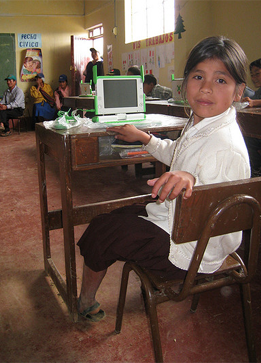One Laptop per Child: Disappointing results?

Simply purchasing a device such as a laptop and handing it to a child is unlikely to turn them into the next Zuckerburg. However, it can teach them basic, valuable skills that will assist them when it is time to leave education and support themselves by joining the work force.
At least, this is the view from Peru, where the largest program involving One Laptop per Child, an American charity's scheme currently operates. Active in more than 30 developing countries across the globe, the aim of the project is to provide children with access to a laptop for educational purposes.
However, according to an evaluation of the scheme's success by the Inter-American Development Bank (IDB), the results may not be as promising as we may have hoped.
Peru is one of the few places that is currently enjoying an economic boom -- but it has one of Latin America's lowest-ranking educational systems, which no doubt hampers its economic capabilities in a global setting.
After spending $225 million to provide 850,000 laptops across the country, it was hoped that test scores in basic education, such as math and literacy, would improve.
It has not been successful. According to a report released by Peru's education ministry last month, only 13 percent of those under ten achieve a basic standard in math, and only 30 percent in literacy.
The IDB's evaluation, a study of 319 primary schools in Peru conducted over a period of 15 months, found that the children who received the laptops showed no improvement, and nor did access to such devices lead to increased motivation to learn or more time spent studying.
Why such results? The IDB concluded that OLPC does not provide enough guidance for teachers to show students how to effectively use the computers in class -- and so the next item on the agenda should be improving teacher training.
However, the report does congratulate the Peruvian government for providing the computers, as less than 25 percent of households had access to a computer in 2010.
Now, far more students and households have access to such devices -- the ratio of computers to students rising from 0.28 to 1.18 -- and it will help students become more comfortable with basic tasks, even if that is not reflected in test scores for general education.
It is not surprising that simply having access to such devices becomes a catalyst for improved education. Instead, technology has to be carefully integrated into courses as a supplementary means of improving learning environments -- and teachers must be trained properly in its use.
Image credit: One laptop per child
Related: